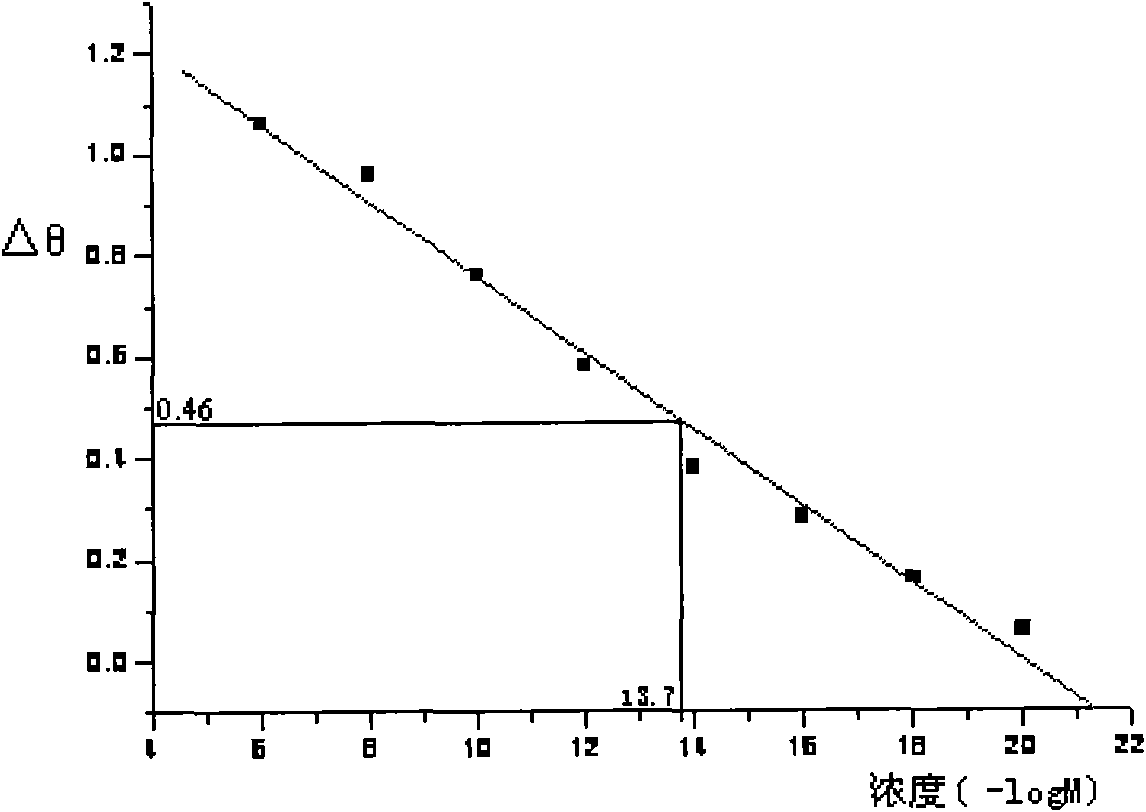Method for detecting testosterone by using surface plasmon resonance (SPR) sensor
A surface plasmon and resonance sensor technology, which is applied in the measurement of phase influence characteristics, etc., can solve the problems of limiting the application of surface plasmon resonance technology, poor chip reuse performance, and harsh detection environment requirements, so as to reduce detection costs and selectivity. High, responsive effects
- Summary
- Abstract
- Description
- Claims
- Application Information
AI Technical Summary
Problems solved by technology
Method used
Image
Examples
Embodiment 1
[0032]A surface plasmon resonance sensor chip, such as figure 1 As shown, it includes a glass substrate 1, a gold film layer 2, a monomolecular alkyl chain layer 3 and a molecularly imprinted polymer film 4; Base chain layer 3 and molecularly imprinted polymer film 4;
[0033] The structural formula of the monomolecular alkyl chain layer 3 is Au-(CH 2 ) 11 CH 3 ;
[0034] The molecularly imprinted polymer film 4 is obtained by photopolymerization of template molecules, functional monomers, crosslinking agents, pore forming agents and photoinitiators, the template molecule is the target molecule testosterone to be imprinted, and the functional monomer is methacrylic acid The crosslinking agent is ethylene glycol dimethacrylate; the pore forming agent is acetonitrile;
[0035] A method for preparing a surface plasmon resonance sensor chip, the specific steps of which are:
[0036] 1) The method of vacuum evaporation is used to plate a gold film layer 2 on the glass substra...
PUM
 Login to View More
Login to View More Abstract
Description
Claims
Application Information
 Login to View More
Login to View More - R&D
- Intellectual Property
- Life Sciences
- Materials
- Tech Scout
- Unparalleled Data Quality
- Higher Quality Content
- 60% Fewer Hallucinations
Browse by: Latest US Patents, China's latest patents, Technical Efficacy Thesaurus, Application Domain, Technology Topic, Popular Technical Reports.
© 2025 PatSnap. All rights reserved.Legal|Privacy policy|Modern Slavery Act Transparency Statement|Sitemap|About US| Contact US: help@patsnap.com


